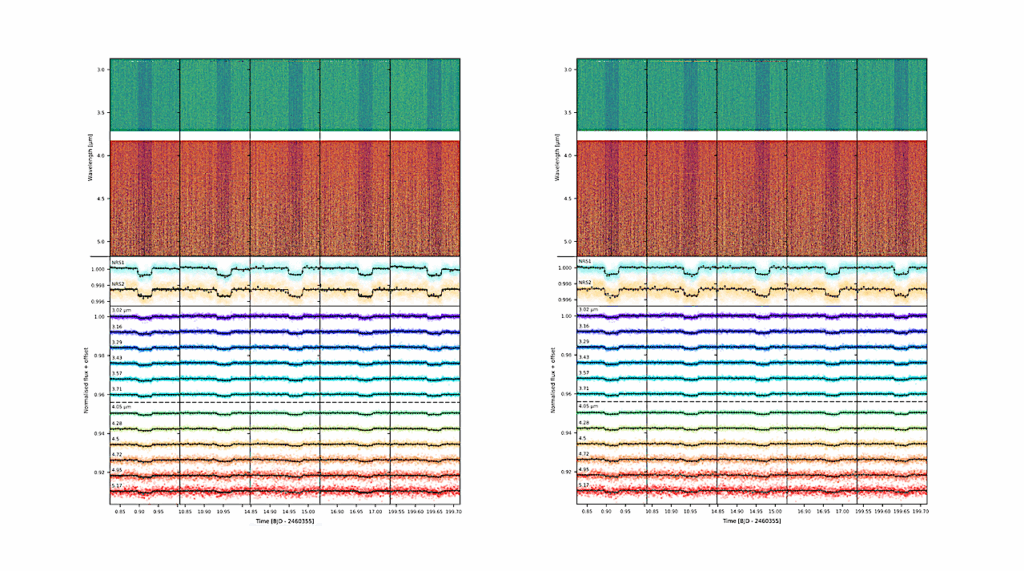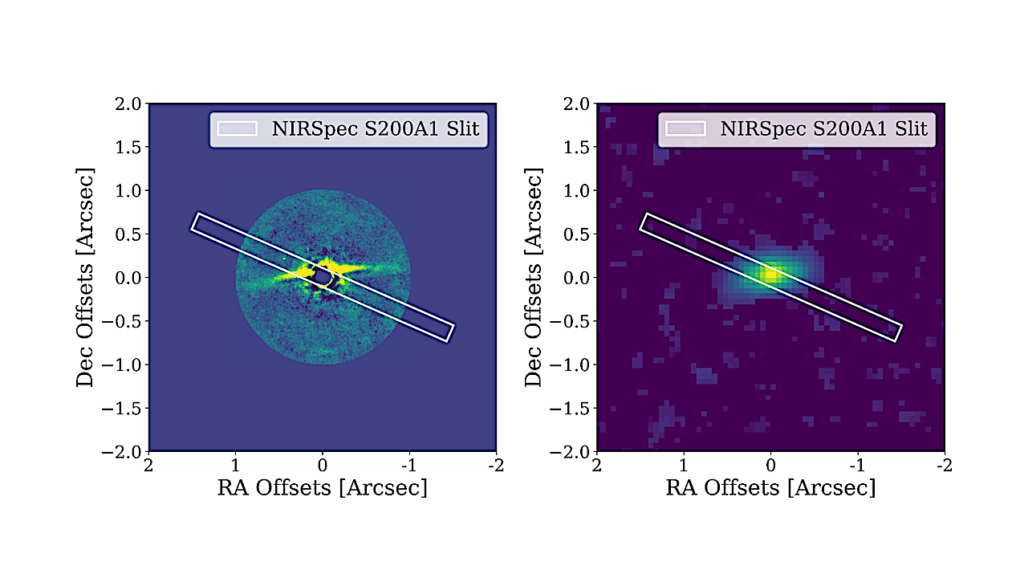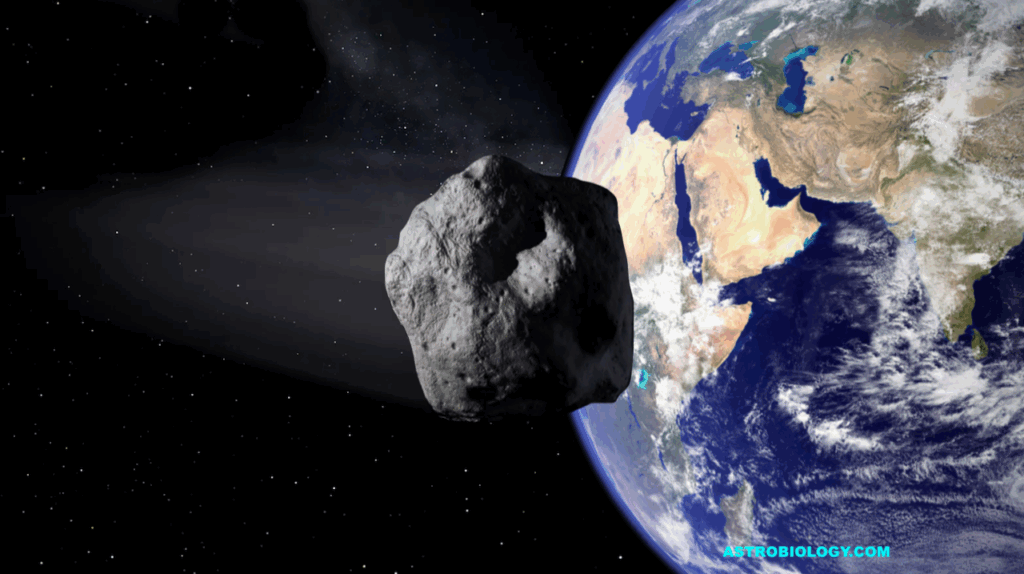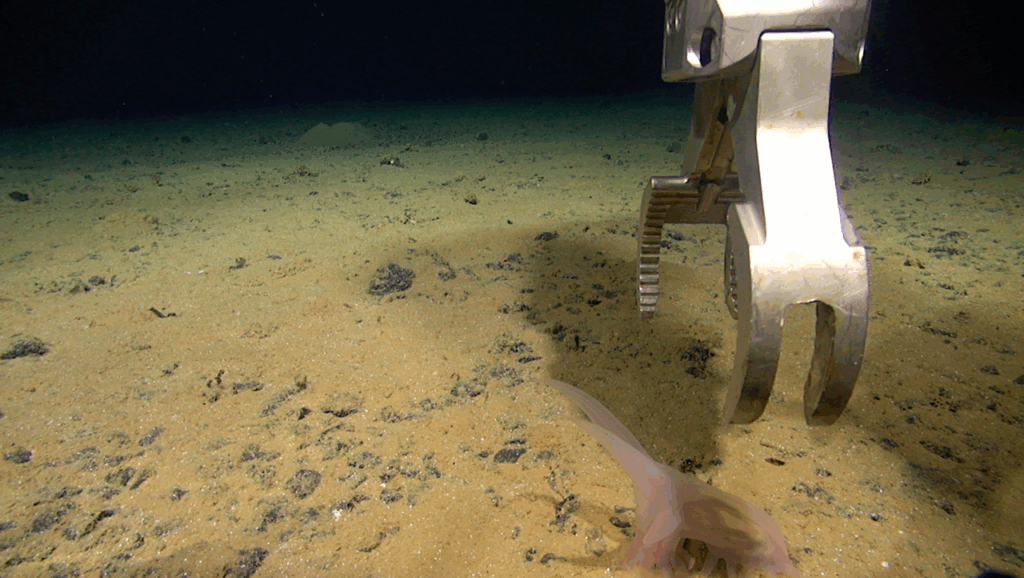ALMA Spectroscopy of Europa: A Search for Active Plumes
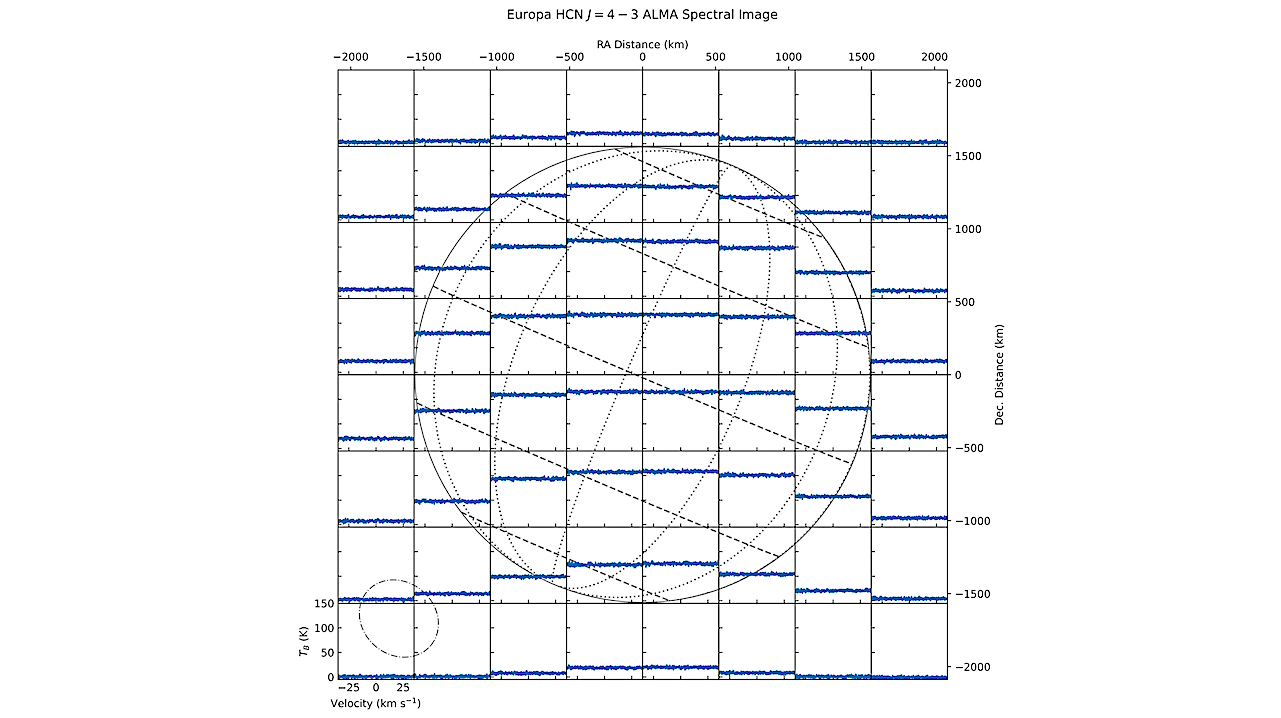
The subsurface ocean of Europa is a high priority target in the search for extraterrestrial life, but direct investigations are hindered by the presence of a thick, exterior ice shell.
Here we present spectral line and continuum maps of Europa obtained over four epochs in May-June 2021 using the Atacama Large Millimeter/submillimeter Array (ALMA), to search for molecular emission from atmospheric plumes, with the aim of investigating subsurface processes.
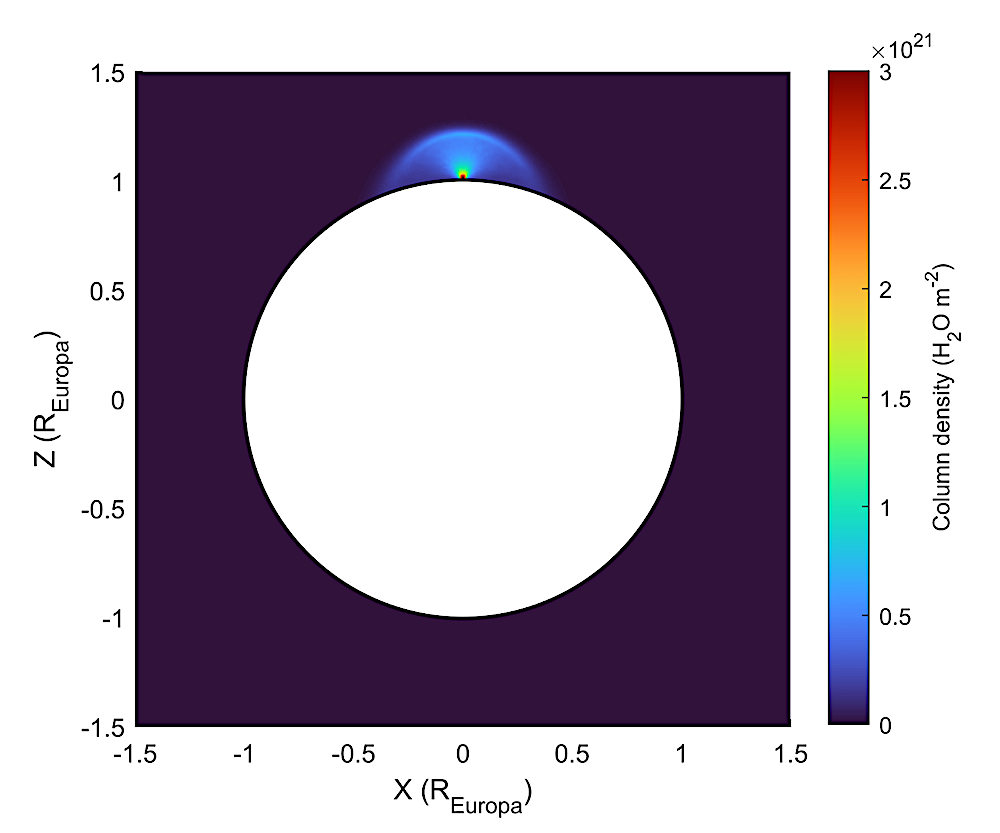
Column density of H2O from the DSMC plume model of Tseng et al. (2022), emanating for the north pole of Europa, for a production rate Q = 1029 s−1 . The disk of Europa is masked with a white circle. — astro-ph.EP
Using a 3D physical model, we obtained upper limits for the plume abundances of HCN, H2CO, SO2 and CH3OH. If active plume(s) were present, they contained very low abundances of these molecules. Assuming a total gas production rate of 1029 s−1, our H2CO abundance upper limit of <0.016\% is more than an order of magnitude less than measured in the Enceladus plume by the Cassini spacecraft, implying a possible chemical difference between the plume source materials for these two icy moons.
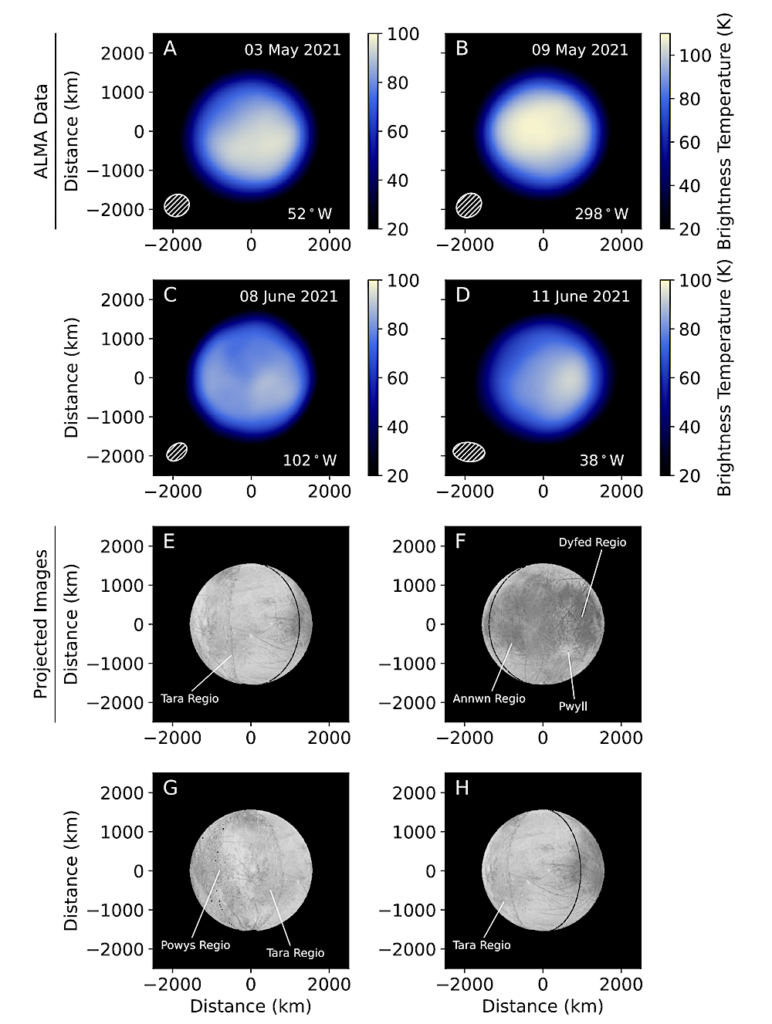
(A–D) ALMA Band 7 (0.9 mm) continuum brightness temperature maps of Europa on the four observing dates (rotated in the plane of the sky to align the pole with celestial north). Distances are projected in the plane of the sky. The sub-observer longitude and ALMA beam size are indicated in the lower part of each panel. (E–H) Composite projected optical images of Europa’s surface from Galileo and Voyager optical data appropriate for the observing geometry of panels A–D (obtained from astrogeology.usgs.gov/search). The approximate locations of various surface features, including ‘regiones’ and the Pwyll crater, are marked. Black line denotes 0◦W longitude. — astro-ph.EP
M. A. Cordiner, A. E. Thelen, I.-L. Lai, W.-L. Tseng, C. A. Nixon, Y.-J. Kuan, G. L. Villanueva, L. Paganini, S. B. Charnley, K. D. Retherford
Comments: Submitted to IAU Symposium 383 conference proceedings — Astrochemistry VIII: From the First Galaxies to the Formation of Habitable Worlds
Subjects: Earth and Planetary Astrophysics (astro-ph.EP)
Cite as: arXiv:2404.05525 [astro-ph.EP] (or arXiv:2404.05525v1 [astro-ph.EP] for this version)
https://doi.org/10.48550/arXiv.2404.05525
Focus to learn more
Submission history
From: Martin Cordiner PhD
[v1] Mon, 8 Apr 2024 13:50:26 UTC (29,129 KB)
https://arxiv.org/abs/2404.05525
Astrobiology,



